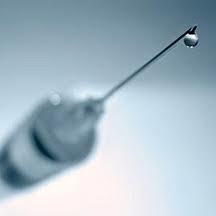Vaccine Ingredients
[SaneVax: Many of the ingredients in vaccines have never been individually tested for safety. Because they have been used for decades and are often found in everyday items, these ingredients fall into the ‘presumed safe’ category with no requirement for further investigation. Will this presumption destroy your health and that of your family?]
Yeast in Vaccines Tied to Autoimmune disorders
By Heidi Stevenson
Yeast is associated with the staff of life, bread—not to mention being the basis pleasure-inducing beer. So why should we be concerned about its presence in a large number of vaccines? A new study reveals that injecting yeast may be the cause of the autoimmune disease epidemic, which is devastating the lives of millions.

It’s well-recognized that the incidence of autoimmune diseases has been rising at an enormous rate. A new study indicates that a significant factor in causing them may be the common bakers or brewers yeast, Saccharomyces cerevisiae[1] used in many vaccinations, including HepB, which is given to nearly all newborn babies in the United States before they’re a day old.
The specific part of S. cerevisiae that’s of concern is mannan, which is found in the cell walls of yeasts and also in mammalian glycoproteins. These glycoproteins are found in cell walls, connective tissues like collagen, gastrointestinal mucous secretions, and blood plasma. They perform many functions. Obviously, if the immune system goes on the attack against mannan, it can be devastating. Yet, that appears to be happening in many autoimmune diseases.
These diseases happen when the body’s own defense system turns on itself, resulting in life-eroding conditions like rheumatoid arthritis, Crohn’s disease, inflammatory bowel disease, systemic lupus erythematosus, anti-phospholipid syndrome, multiple sclerosis, diabetes mellitus type 1, and even heart disease.
The Centers for Disease Control (CDC) has no doubt about the increase in autoimmune diseases[2] and the National Institutes of Health (NIH) has produced a nice document outlining their approach to dealing with it. The “Autoimmune Diseases Research Plan”[3] discusses their approach to dealing with the issue, including the type of research they’re supporting. Nowhere is there any indication that vaccinations are being considered as a potential cause.
Of course, if you don’t look for it, you are not likely to find it. Clearly, the CDC is not promoting a genuine investigation into finding the causes of autoimmune disorders, as they’re willing to consider anything and everything … except that elephant in the room named vaccination. As is the case with autism, the primary focus is on genetics, with environment also considered—as long as the term environment doesn’t include vaccines. As with autism, that focus completely ignores the ourright absurdity of blaming genetics for new non-infectious disease phenomena.
How Can Yeast Cause Such Terrible Diseases?
Yeast is, of course, used to make bread rise and create the alcohol in beer. So how can it suddenly turn into an enemy? The answer is in how it enters the body, and what enters with it. The purpose of a vaccine is to create a localized storm in the immune system so that it will respond to a co-injected substance, which may be a weakened microbe or a small bit of a microbe, by creating antibodies to it.
An irritant, called an adjuvant, is what causes the immune system storm, and the microbe is called an antigen. The catch is that other substances injected with the antigen and adjuvant may also be seen as antigens. If one of those substances is similar to something that naturally exists in the body, then the immune system may create antibodies to part of its own body, creating an autoimmune disease.
Parts of the mannan in yeast are similar or identical to parts of the human body. So S. cerevisiae—yeast—used in vaccines has the potential of causing autoimmune disorders. In fact, S. cerevisiae is used in a variety of ways in vaccines. It is, when used whole, a potent adjuvant[4]. On top of that, genetic manipulation is now being used on it to create artificial antibodies[4], so S. cerevisiae is becoming more common in vaccines.
Read the entire article here.



Leave a Reply